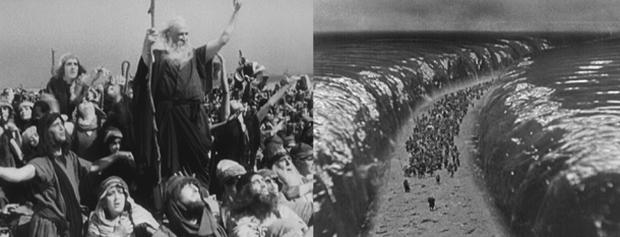Daily Archives: February 22, 2021
Filters
cinema du look
film movement in the 1980s and 1990s
Inspired by new Hollywood films, such as Francis Ford Coppola
focus on style over substance

Young, alienated protagonists, represent french youth of the 1980s

doomed love affairs

cynical view of police

high culture/pop culture references
key directors:
Jean-Jacques Beineix
Luc Besson
Leos Carax

DOGME 95
Film making approach
Dogme 95 is a film making movement created in 1995 surrounding a set of rules created by Danish producers Lars von Trier and Thomas Vinterberg.
These 2 producers created a set of film making rules for the movement called the Vows of Chastity:
» Shooting must be done on location. Props and sets must not be brought in
» The sound must never be
produced apart from the images or vice versa
» The camera must be hand-held
» The film must be in colour and special lighting is not permitted
» Optical work and filters are forbidden
» The film must not contain superficial action (eg murder)
» Temporal and geographical alienation are forbidden (That is to say that the film takes place here and now)
» Genre movies are not acceptable
» The film format must be Academy 35 mm (squarer aspect ratio)
» The director must not be credited
35 Dogme films have been created in total, as the movement broke up in 2005 and the creators wanted to experiment with new projects.
Social/historical/political Context
Social: It was first presented to a cinema conference in Paris to celebrate cinema and its uncertain future. It was made to give artists the power instead of the studio.
Historical: As it was recent (1995) it was aiming to return to traditional film making in light of all the new technology being commonplace for film.
Political: Not particularly politically driven/influenced
Directors associated with the movement
Lars von Trier
Lars von Trier was one of the founders of Dogme 95 and the Vows of Chastity. He directed the second Dogme film The Idiots (1998), and also directed Breaking the Waves (1996) which had the Dogme 95 style but broke some of the rules so it wasn’t counted.
Thomas Vinterberg
Thomas Vinterberg was one of the founders of Dogme 95 and the Vows of Chastity, and directed the first Dogme film Festen (1998), which won the Jury Prize at the Cannes Film Festival.
Søren Kragh-Jacobsen
Søren Kragh-Jacobsen was a prolific Dogme 95 film director, and eventually joined the Dogme Collective which was made up of him, Von Trier, Vinterberg and Levring. He directed multiple Dogme films, such as Mifune (1999) a romantic comedy, which was a different take on the Dogme style.
Kristian Levring
Kristian Levring was also a prolific Dogme 95 film director, and was the fourth member of the Dogme collective. He directed the fourth Dogme 95 film The King Is Alive (2000)
Films associated with the movement
Festen (1998)

Festen (Celebration) is a drama that’s storyline is based around abuse. The ‘home movie’ aesthetic that dogme movies bring helps create a disturbing and real atmosphere to the plot.
Link: https://youtu.be/vKe_AxTFGXc
will have more films it just didnt save
Sources:
https://www.youtube.com/watch?v=vKe_AxTFGXc
https://youtu.be/lC3xHVvcezY
https://youtu.be/wHMvR3CYDdk
http://www.dogme95.dk/about/
https://en.wikipedia.org/wiki/Dogme_95
Metz’s model of genre development: Biblical epics
The biblical epic has been a critics and audiences favorite since the very start of film as a commercial medium at the start . The sprawling narratives that attempt, sometimes effectively to spread messages about the nature, power and eventually the flaws in the christian faith.
-The experimental phase-
One of the most popular and influential films in the genre came in 1923, with the original, silent picture “The ten commandments”

The film depicts the story of Exodus, as Moses leads the Israelite’s out of Egyptian slavery and into the holy land. The film attempts to broadcast religion to a generation who grew more secular until witnessing the horrors of war. To this end the film features and extended sequence of a contemporary family discussing Theology.
The clear goal of the film was to usurer in a new generation of Christians but its legacy still remains the expansive awe inspiring sets of ancient Egypt, the powerful direction of large crowds, and one of the great scenes in early cinema with the parting of the red sea.

-The Classic phase-
-The Parody Phase-
As modern life continued and process like urbanization and the catholic church began to loose its influence and thus power. This lead to more and more people began to turn to atheism and viewing the idea of religion to be absurd and even comical.
New Hollywood Presentation
MEXICAN NEW WAVE/NUEVO CINE MEXICANO;
Presentation on link below;
